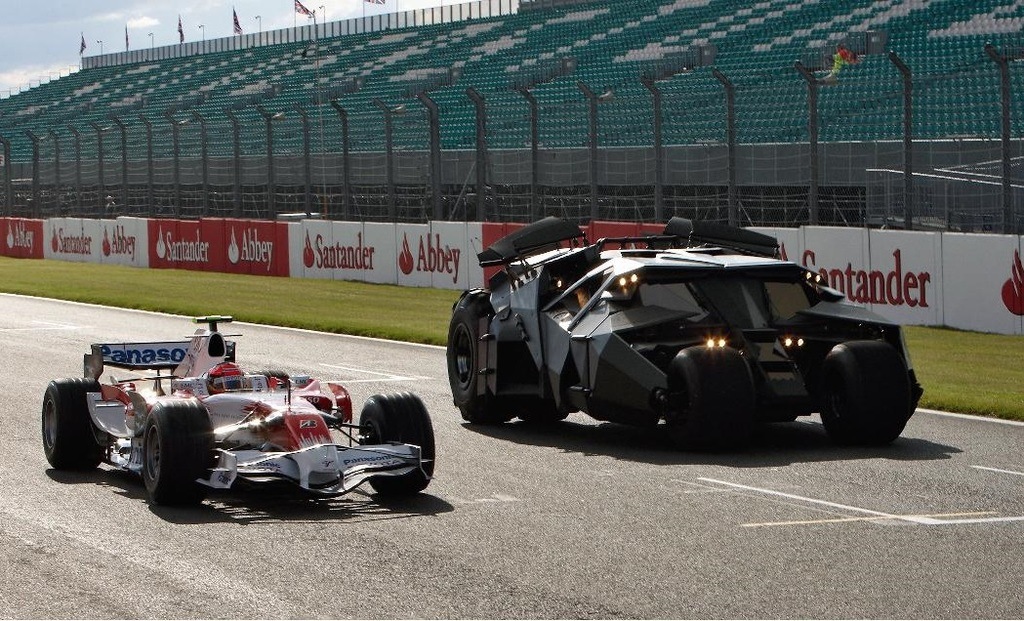July 23rd, 2014, marked a major celebration for a fictional protector who has fended off the most heinous criminals. Sometimes called the Dark Knight or Caped Crusader, the legendary comic book crime fighter is known as Batman. Back on this day in 1939, DC would probably have no idea of the cultural significance the Bob Kane created character would carve out over three-quarters of a century. Transitioning beyond comic books, Batman has driven television, movie, and game content. Along a 75-year journey of fighting for Gotham City’s salvation and often the world, Batman would fly-in to oppose the likes of the Joker, Penguin, or The Riddler.
When Batman was not swooping into a scene, the superhero typically used a four-wheeled mode of transportation to move around Gotham. Besides the aid of police commissioner Gordon and his sidekick Robin in many cases, Batman’s partner has been the Batmobile. Over 75 years, the Batmobile has spawned a dark and alluring character to complement the vehicle’s driver.
The Red Knight Vehicle
Before Batman received his first dedicated comic book, his debut appearance in Detective Comics #27 launched much of our perceptions of the Caped Crusader. Keeping that in mind, several aspects would also be changed early on in the comic book. Besides the early institutions that Batman would reframe from killing criminals, the Batmobile would gradually be reshaped. Introduced as an unremarkable red convertible in 1939, Batman’s vehicle was not even coined as the Batmobile. The first announced comic book appearance of the Batmobile took place in early 1941. By this time, elements such as a bat fin and a darker, custom-looking body were adopted. The Batmobile took shape as no ordinary vehicle.
Dude, Where’s My Batmobile?
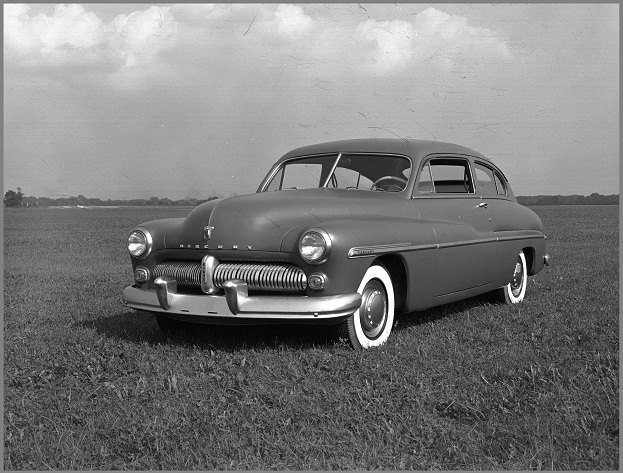
When Batman and Robin premiered in a film series during the 1940s, no particular Batmobile was used. In the 1943 film series that took liberties with the Batman character (portraying him as a government agent), Alfred chauffeured Batman and Robin in a black Cadillac. The 1943 film series was produced during World War 2 and was made with a low budget.
After the second world war, Batman and Robin were given a second chance on the silver screen. In the 1949 film serial, the heroes drove a plain, late model 1949 Mercury. Again, not a custom Batmobile, the Mercury was driven by the Dramatic Duo themselves instead of depending on Alfred. It would not be until 1960 that a live version of the Batmobile appeared, and even that vehicle was created for public exhibitions.
Turbines to Speed
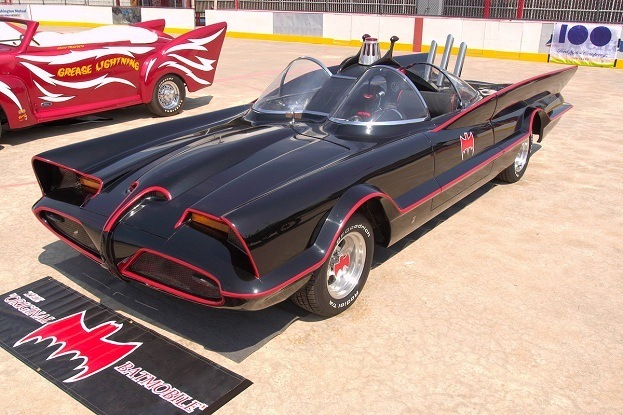
While the Batmobile changed gradually to reflect late-model vehicles’ styling in the comic book, a radical and iconic version of the vehicle appeared on television in 1966. Based on a Lincoln Futura concept car, Adam West and Burt Ward rode in a flamboyant, open-air crime-fighting vehicle. Equipped with a full array of gadgets, the Batmobile in the 1966 TV series featured a mobile batcomputer in the trunk. Famously the creation of renowned automotive customizer George Barris, the 1966 Batmobile sported some unique designed features. Simply a painted metal pail, the jet turbine outlet appearing on the 1960s Batmobile would become an element on every succeeding live-action version of the superhero‘s vehicle.
Though Batman purists rarely regard the campy TV series favorably, the Batmobile from the 1960s live-action appearance has been the most famous. Nowhere was the Futura-based Batmobile appeal so evident than the 2013 Barrett Jackson Classic Car Auction in Scottsdale, Arizona. A buyer paid $4,620,000 for the original Batmobile that was previously owned by George Barris. For a more modest sum of $200,000 US, you can buy a street-worthy replica through Hammacher Schlemmer.
A Sporty Bat
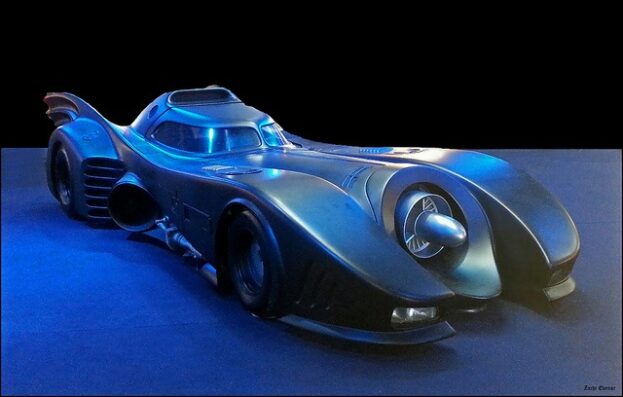
Following the Lincoln Futura-based Batmobile, styling carried on projecting the image of a high-tech, crime-fighting supercar. From the 1970s through to the 1980s, both television cartoons and the comic books portrayed Batman’s trusted transportation along the lines of an exotic car such as a Lamborghini or Ferrari.
In 1989, the Tim Burton-directed Batman motion picture propelled the Dark Knight back into the mainstream. More serious than the 1960s TV series and cartoons, the movie presented a bold, new approach to the Batmobile. The new superhero car featured a long, sleek vehicle with a land speed record holder’s image. Michael Keaton’s Batman was hardly inconspicuous driving this Batmobile. However, the sheer speed potential allowed him to swiftly navigate through Gotham City. Not just a captivating new shape, the 1989 Batmobile was loaded with some fierce standard equipment. Machine guns, retractable shielding, and autonomous driving were shown off in the first film. The same Batmobile was used in the 1992 follow-up Batman Returns, where the low ground clearance somehow trekked on snowy streets. Though Penguin sabotaged the Batmobile, Batman narrowly escaped from chasing police by turning the vehicle into the “Batmissile.” While the follow-up Batman Forever movie redesigned the Batmobile in a drastically different image, Batman: The Animated Series largely reused the 1989 car’s appearance. In Batman and Robin, the Batmobile was a single-seat vehicle with an open roof (similar to a Formula 1 car in that aspect).
The Big Bad Bat
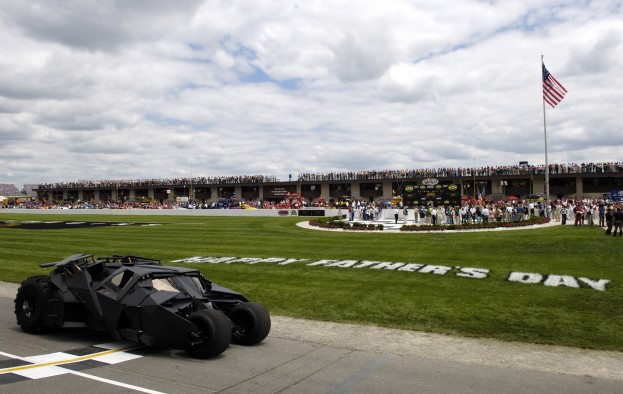
With the growing trend in crossover vehicles, why shouldn’t Batman consider something a little more utilitarian? In Frank Miller’s The Dark Knight Returns, a tank-like Batmobile was piloted through the dark comic book tale. With the 2005 reboot of the film franchise, the production designer under director Christopher Nolan’s guidance created the boldest Batmobile ever.
In the film series, the Lucius Fox bridging vehicle was repurposed by Bruce Wayne as part of his Batman persona. Called the Tumbler in Batman Begins, the vehicle featured a wedge-shaped body that appears heavily armored. This Batmobile also featured high-powered autocannons at the front of the vehicle. Described as a cross between a Lamborghini and a tank, the Tumbler provided a robust combination of performance as well as toughness never seen before in a Batmobile. Constructed from scratch, the Tumbler was a polar opposite to the treatment the Batmobile received years ago.
Ahead of the Batman vs. Superman movie scheduled for release around 2016, images of the new Batmobile appear to show a car incorporating elements of the sports car-like vehicle of the 1989 motion picture mixed with attributes of the Tumbler found in the Christopher Nolan trilogy.
While the Batmobile has been subjected to many changes over 75 years, the vehicle remained loyal to providing the Dark Knight with transportation to answer the call for justice.
Information and photo source: Barrett-Jackson, Ford Motor Company, Rusty Jarrett/Getty Images, Toyota Motor Corporation

